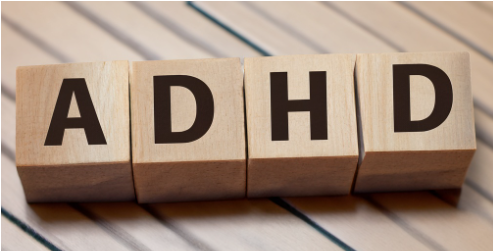This is 100% AI-generated, so you must verify every statement with a genuine and qualified professional.
“While there is extensive research on the prevalence of ADHD in children, there is limited information available on the percentage of adults in the U.S. with DSM-diagnosed ADHD and the number of children affected by this condition. In this article, we will explore the existing peer-reviewed studies on the prevalence of ADHD in adults, the factors influencing the diagnosis of ADHD in adults, and the challenges associated with accurately diagnosing ADHD in this population.
Introduction to ADHD and DSM
ADHD is a complex disorder characterized by symptoms of inattention, hyperactivity, and impulsivity. It can significantly impact a person’s daily functioning, including academic performance, work productivity, and social interactions. The DSM is a classification system used by mental health professionals to diagnose psychiatric disorders, including ADHD. The current version, DSM-5, provides specific criteria that must be met for an individual to receive an official diagnosis of ADHD.
Prevalence of ADHD in adults in the U.S.
While ADHD is often associated with childhood, it is now well-established that the disorder can persist into adulthood. However, the exact prevalence of ADHD in adults in the U.S. remains uncertain. Several studies have attempted to estimate the percentage of adults with ADHD, but the results vary widely. Some studies suggest that approximately 4-5% of adults in the U.S. meet the diagnostic criteria for ADHD, while others report higher rates.
Peer-reviewed studies on the percentage of adults in the U.S. with DSM-diagnosed ADHD
There have been several peer-reviewed studies conducted to examine the prevalence of DSM-diagnosed ADHD in adults in the U.S. One study published in the Archives of General Psychiatry found that approximately 4.4% of adults in the U.S. met the criteria for ADHD. Another study published in the Journal of Clinical Psychiatry reported a prevalence rate of 8.1%. These variations in prevalence rates could be attributed to differences in study methodologies, sample sizes, and diagnostic criteria used.
Factors influencing the diagnosis of ADHD in adults
Diagnosing ADHD in adults can be challenging due to several factors. One factor is the overlap of ADHD symptoms with other psychiatric conditions, such as anxiety and depression. Additionally, adults with ADHD may have developed coping mechanisms that mask their symptoms, making it harder to identify the disorder. Societal misconceptions about ADHD being a childhood disorder can also contribute to underdiagnosis or misdiagnosis in adults.
Comparison of ADHD prevalence in adults and children
Comparing the prevalence of ADHD in adults and children reveals interesting differences. While ADHD is commonly diagnosed in children, the disorder often goes undiagnosed or misdiagnosed in adults. This discrepancy could be due to various reasons, such as adults having learned to adapt to their symptoms or healthcare providers focusing more on childhood ADHD. However, recent research suggests that the prevalence of ADHD in adults may be higher than previously thought, emphasizing the need for accurate diagnosis and appropriate support.
Challenges in diagnosing ADHD in adults
Diagnosing ADHD in adults presents unique challenges. As mentioned earlier, symptoms of ADHD can overlap with other mental health conditions, making it difficult to differentiate between them. Additionally, the lack of awareness and understanding of adult ADHD among healthcare professionals can contribute to missed or incorrect diagnoses. The subjective nature of self-reporting symptoms further complicates the diagnostic process, as individuals may underreport or overreport their symptoms.
Understanding DSM criteria for ADHD diagnosis
To diagnose ADHD in adults, clinicians refer to the DSM-5 criteria. These criteria include symptoms of inattention, hyperactivity, and impulsivity that have persisted since childhood and continue to impair daily functioning. The symptoms must be present in multiple settings, such as work or social environments. Additionally, the diagnosis of ADHD requires evidence of impairment that is not better explained by another mental health condition.
Limitations of peer-reviewed studies on ADHD prevalence
While peer-reviewed studies provide valuable insights into the prevalence of ADHD in adults, it is important to acknowledge their limitations. Many studies rely on self-reporting of symptoms, which can be biased or inaccurate. Additionally, the studies often use different methodologies and diagnostic criteria, leading to variations in prevalence rates. Further research is needed to establish more reliable estimates of ADHD prevalence in adults and to address the methodological challenges faced in these studies.
Implications of ADHD diagnosis on individuals and society
Receiving a diagnosis of ADHD can have significant implications for individuals and society as a whole. Understanding one’s ADHD can lead to self-acceptance and the development of effective coping strategies. Proper diagnosis and treatment can also improve academic and occupational outcomes, enhance interpersonal relationships, and reduce the risk of associated mental health conditions. From a societal perspective, recognizing and addressing adult ADHD can lead to better support systems, improved workplace accommodations, and more targeted public health initiatives.
Conclusion and future research directions
In conclusion, while there is limited research on the percentage of adults in the U.S. with DSM-diagnosed ADHD and the number of children affected by this condition, peer-reviewed studies provide some insights into the prevalence of ADHD in adults. However, there are challenges in accurately diagnosing ADHD in adults, including the overlap of symptoms with other mental health conditions and societal misconceptions. Future research should focus on addressing these challenges and establishing more reliable estimates of ADHD prevalence in adults. By doing so, we can improve our understanding of adult ADHD, enhance diagnostic accuracy, and ensure appropriate support for individuals with this condition.

